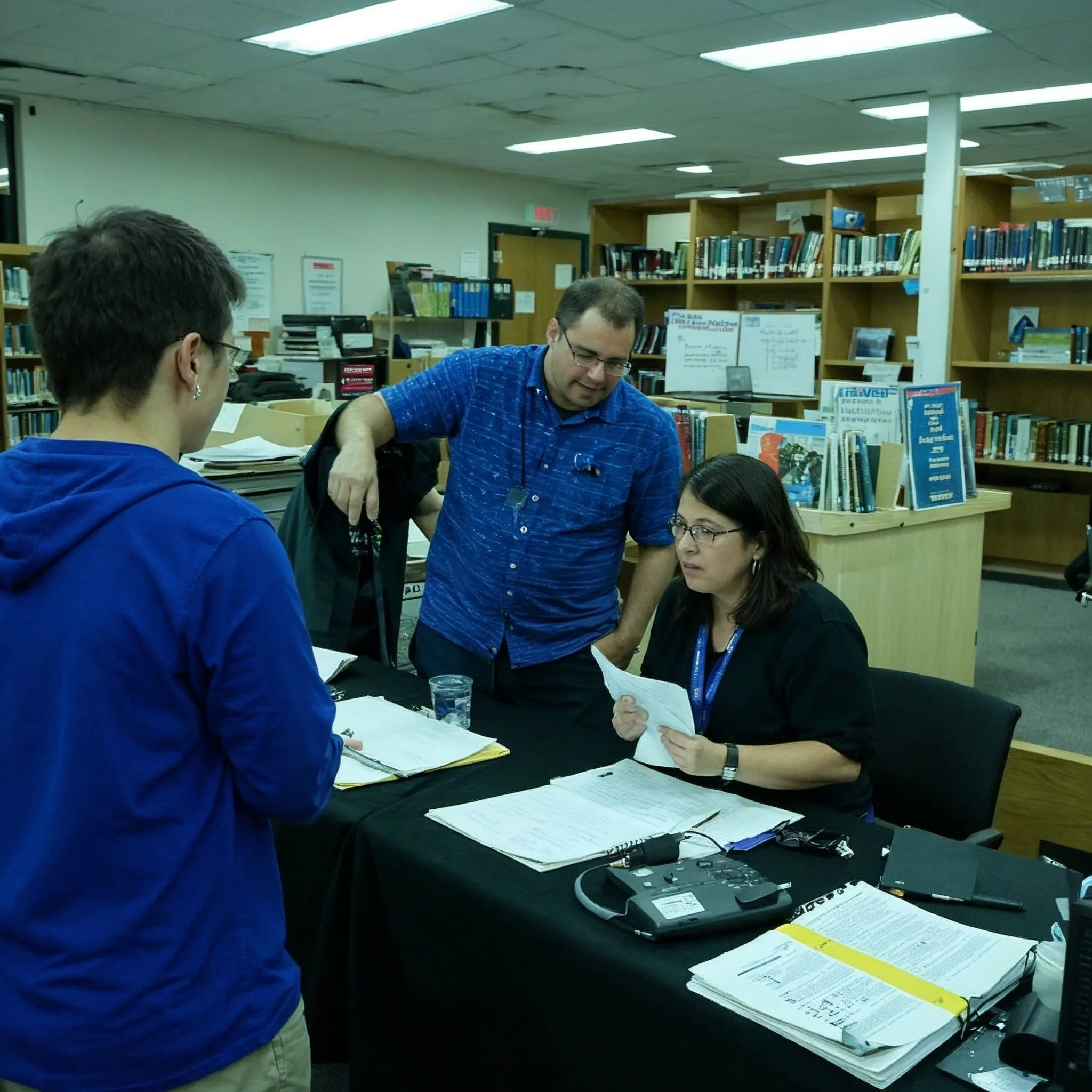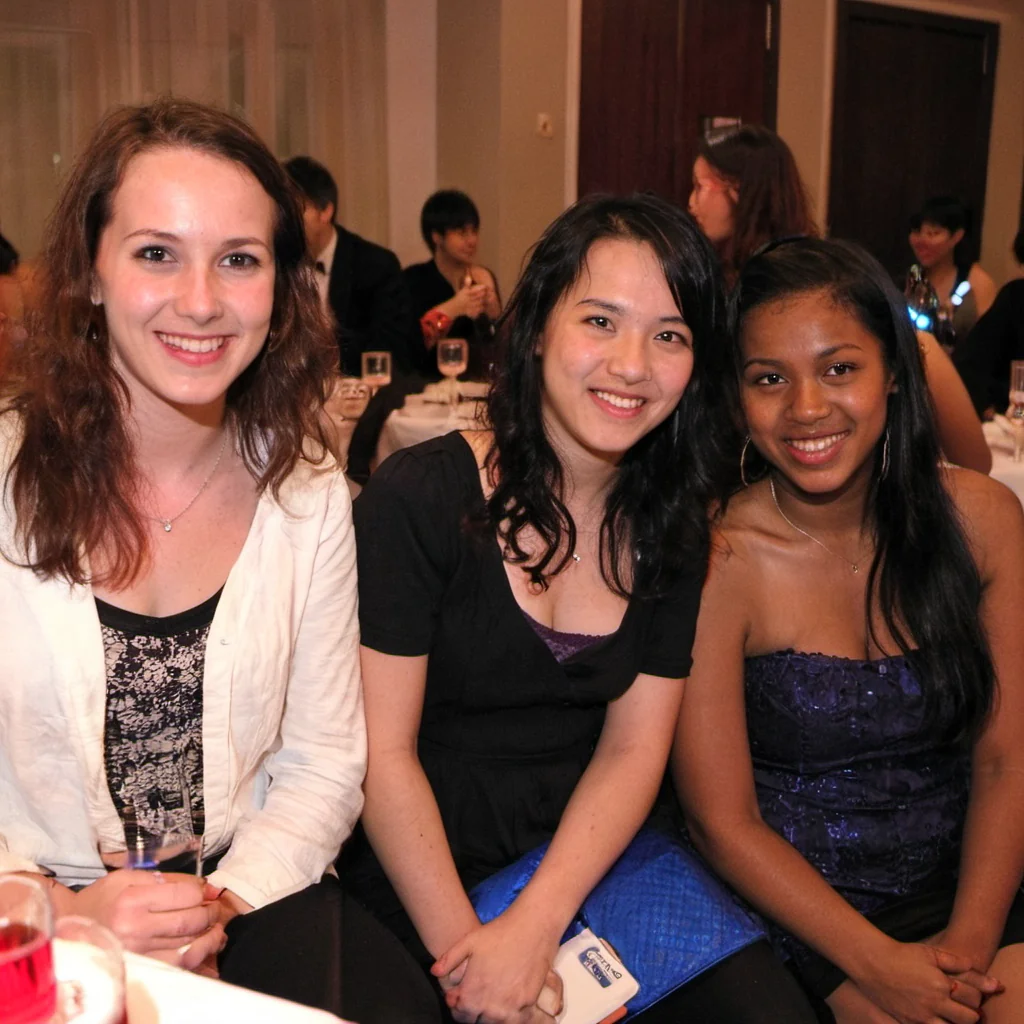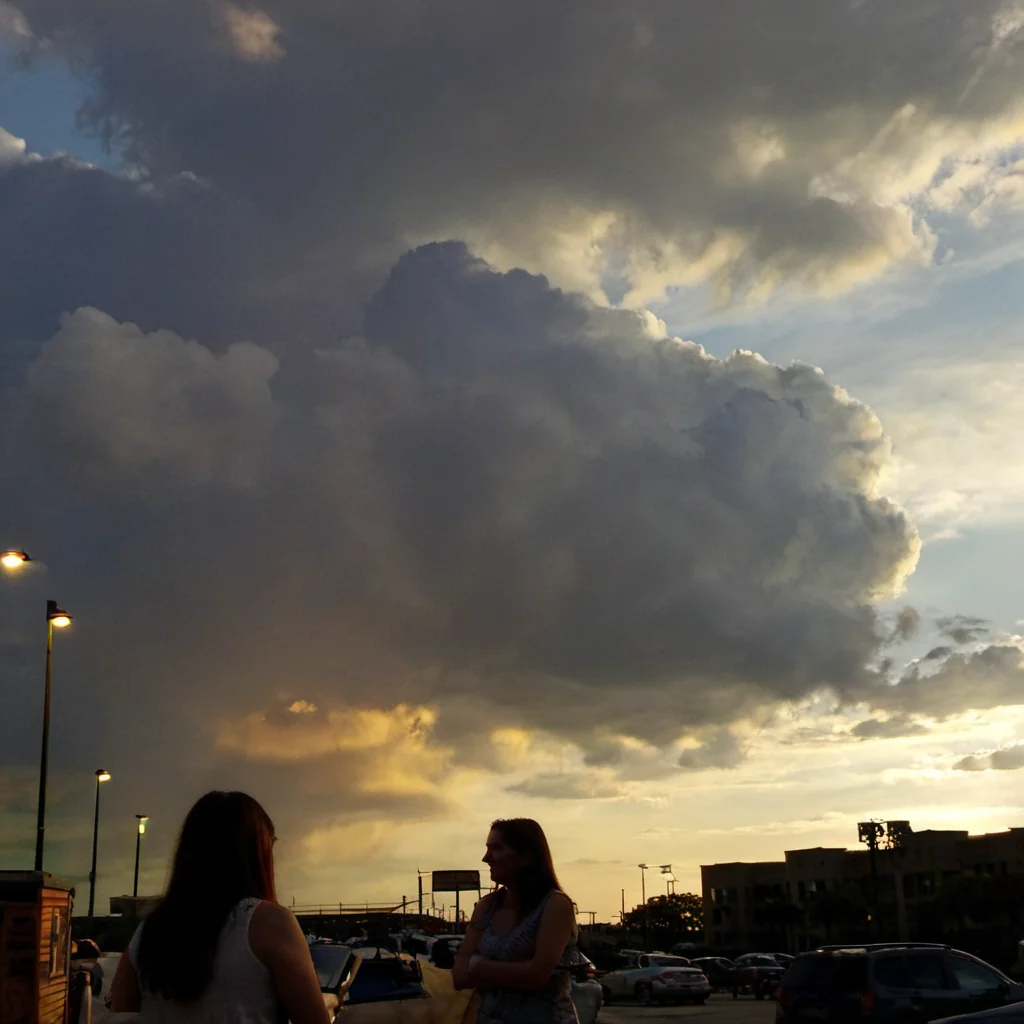How to Spot AI Photos
Leaving aside the fact that next year there will probably be image generators with results completely indistinguishable from photos taken with a real camera, in this section of the site, I will analyze some AI-generated photos from my site to show what allows us to distinguish them from real images:
images/ai12.webp

Although it seems to make sense at first glance, there are obvious errors: there is an undefined object with an arm(?) on which the man in the center of the image is leaning, and furthermore, there is an ill-defined tech object on the desk.
images/ai8.webp

The only thing that objectively stands out to me as poorly generated is the undefined object the girl in the center is holding. But I think the thing that makes it most obvious that it's AI-generated are the facial expressions of the three girls — even though there's nothing technically wrong, you can just tell at a glance.
images/ai5.webp

In this case, it's very simple to understand that it's AI-generated; just look at the nonsensical text (although, at the time of writing, THERE ARE models capable of replicating all kinds of writing very well).
images/ai4.webp

Okay, honestly, in this one, there are no obvious signs that it's AI. The sky is generated perfectly. The only thing that might be noticed are some slightly deformed cars, but they aren't noticeable unless you zoom in.
Final Thoughts
So, as we've seen from these examples, spotting AI-generated photos can range from trivially easy to incredibly difficult. Sometimes, the giveaways are glaring errors in physics, anatomy, or text (although text generation is improving rapidly). Other times, the clues are much more subtle – perhaps an 'uncanny valley' feeling from facial expressions, slightly unnatural lighting, or tiny background inconsistencies like the distorted cars, only visible upon close inspection. The reality is, AI image generation technology is advancing at an exponential rate. Images that seem obviously fake today might be indistinguishable tomorrow. For now, a combination of looking for outright errors and trusting your intuition about subtle 'off' details is the best approach, but it's a skill we'll constantly need to update.